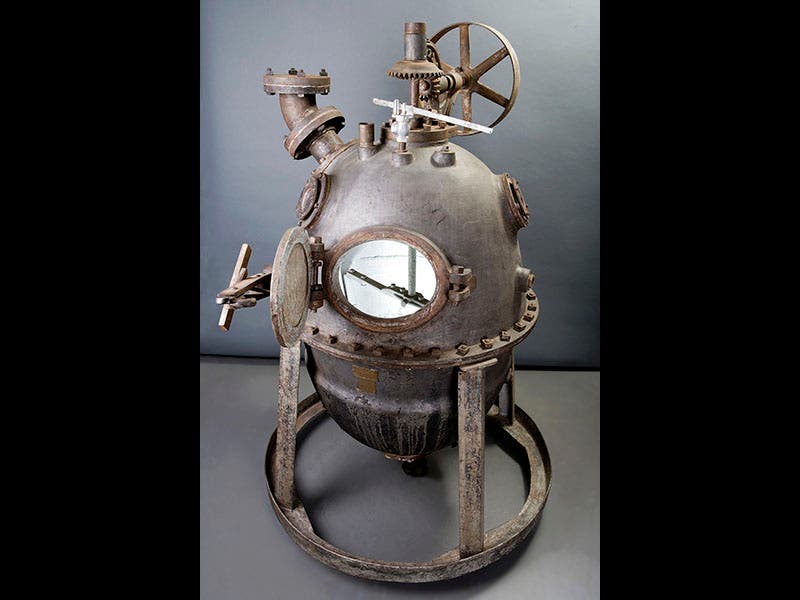Scientist of the Day - Leo Baekeland
Leo Henricus Arthur Baekeland, a Belgian/American chemist, was born Nov. 14, 1863. After moving from Ghent to New York City, Baekeland in 1899 invented a new kind of photographic paper--Velox--that could record images in artificial light. He sold the rights to George Eastman, became quite wealthy, built a chemical lab in his plush new home, and was off to discover better things for better living, through chemistry, to borrow a DuPont slogan that would not be coined for another 30 years. After years of experimenting, Baekeland in 1907 discovered how to get two chemicals, phenol and formaldehyde, to combine to form a hard, heat-resistant, acid-resistant substance that could be molded into any desired shape before it set. Baekeland had invented the first synthetic plastic. He announced it to the world in 1909 and called it Bakelite, and set up his own corporation, the General Bakelite Company, to produce it. Bakelite was cheap, easy to manufacture and mold, and in the dawning age of household electricity, it had the further advantage of having an extremely high resistance to electrical current. Soon it was being used for insulators, pot handles, kitchen-stove knobs, radios (first image), and vacuum tube sockets--anywhere that one needed a material that was impervious to heat, chemicals, and electricity. The original Bakelite was always the same color, dark chocolate, but when the patents expired in 1927, we soon had other manufacturers with their own phenolic resins, now in a variety of colors. So Bakelite became bakelite, a generic term for any hard phenolic plastic, and it was used for hairbrushes, table knife handles, costume jewelry, even Mahjong tiles (second image). It was the first ubiquitous plastic. Baekeland became famous enough to make the cover of Time on Sep. 22, 1924 (third image). His portrait has an odd caption: “It will not burn. It will not melt.”
In 1992, the American Chemical Society launched a new designation program, called National Historic Chemical Landmarks. The goal was to honor and preserve "seminal achievements in the history of the chemical sciences". Although Landmark status has now been extended to discoveries, chemists, and even books, I do believe that the original intent was to honor places and things--particular instruments, apparatus, and laboratories--genuine landmarks, responsible for the "seminal achievements." That would explain the choice of the first Landmark, announced in 1993; it was the "Bakelizer", the high-temperature pressure cooker that Baekeland had used in 1909 to make his first commercial Bakelite. The original Bakelizer is now in the National Museum of American History in Washington, D.C (fourth image). However, it is not currently on display, which doesn't seem quite right for the very first Historical Chemical Landmark. The Chemical Heritage Foundation in Philadelphia hosts a permanent exhibition, Making Modernity, and as part of that exhibition, they have a resin replica of the original Bakelizer on view (fifth image). Perhaps these two should be swapped, so the CHF can display the original, and the NMAH can keep the replica in their storeroom.
Dr. William B. Ashworth, Jr., Consultant for the History of Science, Linda Hall Library and Associate Professor, Department of History, University of Missouri-Kansas City. Comments or corrections are welcome; please direct to ashworthw@umkc.edu.











